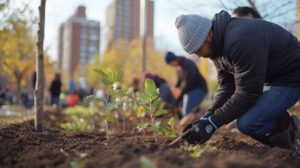تشتهر كاليفورنيا بالطقس الرائع والمناظر الطبيعية الخلابة والشواطئ المشمسة، ولكن سمعتها لها جانب مظلم أيضاً. تُصنف كاليفورنيا باستمرار من بين الولايات التي تضم أكبر عدد من الأشخاص الذين يعانون من التشرد. يراها المقيمون كل يوم، وغالباً ما يصدم السائحون بها؛ فالتشرد مشكلة كبيرة في الولاية الذهبية.
فيما يلي نظرة متعمقة على حالة التشرد في كاليفورنيا، يليها استكشاف أسباب التشرد وعواقبه.
إحصائيات التشرد في كاليفورنيا
تشير التقديرات المبكرة لعام 2022 إلى أن التشرد في كاليفورنيا-الأحدث منذ بداية جائحة فيروس كورونا- أن ما يقرب من 173,800 شخص بدون سكن مستقر في الولاية. تُظهر الأرقام زيادة منذ عام 2019، حتى مع وجود تدابير وقائية مثل وقف الإخلاء والمساعدة في الإيجار وشيكات التحفيز. علاوة على ذلك، تشير الاتجاهات إلى أن التشرد اللاتيني يتزايد بشكل غير متناسب. في مقاطعة لوس أنجلوس، على سبيل المثال، زاد عدد المشردين من ذوي الأصول اللاتينية بحوالي 6000 شخص منذ عام 2020.
ومع ذلك، هناك اتجاه آخر ملحوظ في البيانات يكشف عن التقدم الذي بدأت بعض مبادرات التشرد في إحرازه. أولاً، ألقِ نظرة على إحصائيات من عام 2019:
-
في كاليفورنيا، 72% من الأشخاص الذين يعانون من التشرد بلا مأوى، وهي أعلى نسبة من المشردين بلا مأوى في أي ولاية.
-
على الصعيد الوطني، يقيم أكثر من نصف الأشخاص الذين يعانون من التشرد دون مأوى في كاليفورنيا.
ولكن بحلول عام 2022، تُظهر الأرقام الجديدة أن عدد الأشخاص الذين يعانون من التشرد أصبحوا في مأوى أكثر من أي وقت مضى. في حين أن هذه خطوة في الاتجاه الصحيح، إلا أنها ليست حلاً دائمًا. لا يزال هؤلاء الأشخاص بحاجة إلى أن يكونوا قادرين على العثور على سكن دائم، وهو أمر يزداد صعوبة في كاليفورنيا، خاصة في المناطق التي تتضخم فيها تكاليف العقارات مثل سان دييغو.
التشرد في سان دييغو
إن 2022 عدد النقاط في الوقت المحدد عن التشرد في سان دييغو أن "ما لا يقل عن 8427 شخصًا يعانون من التشرد في جميع أنحاء مقاطعة سان دييغو، بزيادة قدرها 101 تيرابايت عن عام 2020". تسلط الإحصاءات المقلقة الأخرى الضوء على العديد من القضايا المترابطة التي تؤثر على التشرد. وجد تعداد النقاط الزمنية لعام 2022 أن
-
شهد عام 2022 زيادة في عدد العائلات التي تعاني من التشرد، بزيادة 56% عن عام 2020
-
ويشكل سكان سان دييغو السود، الذين يشكلون أقل من 51 تيرابايت من إجمالي عدد السكان في مقاطعة سان دييغو، 241 تيرابايت من المشردين غير المأوى في المنطقة
-
في حين أن 24% من سكان سان دييغو الذين يعانون من التشرد كانوا فوق سن 55 عامًا في كل من عامي 2020 و2022، أظهر إحصاء هذا العام أن 47% من هؤلاء المسنين كانوا يعانون من التشرد لأول مرة، مع وجود 57% يعانون من إعاقة جسدية.
"تقول تاميرا كوهلر، الرئيسة التنفيذية لشركة فرقة عمل سان دييغو الإقليمية المعنية بالتشرد, "يتعلق الأمر بأكثر من مجرد أرقام - إنه يتعلق بالناس. في الوقت الحالي يعاني الكثير من الناس في سان دييغو. إنهم الأمهات والبنات والآباء والأبناء... الأشخاص الذين تحدث إليهم متطوعونا - من شخص مسن مصاب بالزهايمر ينام في خيمة، إلى عائلة تأوي في سيارتهم، إلى أشخاص يعملون بدوام كامل ولكن ليس لديهم دخل كافٍ لدفع الإيجار - ليسوا مجرد أرقام على جدول بيانات. إنهم جيراننا، يبذلون قصارى جهدهم للبقاء على قيد الحياة."
إليكم كيف يقع جيراننا في كثير من الأحيان في براثن التشرد والطرق العديدة التي يتأثرون بها.
أسباب التشرد
هناك العديد من أسباب التشردولكن المشكلة الأولى التي تساهم في التشرد في كاليفورنيا لا يزال هناك نقص في المساكن الميسورة التكلفة. فعندما لا يتوفر السكن الميسور التكلفة، يبدأ أصحاب الدخل المرتفع باستئجار مساكن لذوي الدخل المتوسط، بينما تحتاج الأسر والأفراد ذوي الدخل المتوسط إلى استئجار مساكن لذوي الدخل المنخفض. ومن ثم يُترك السكان من ذوي الدخل المنخفض دون خيارات.
وقالت نان رومان، رئيسة التحالف الوطني لإنهاء التشرد: "إنها نوع من لعبة الكراسي الموسيقية". الإذاعة الوطنية العامة. "والأشخاص الذين لديهم ضربة ضدهم - بسبب إصابتهم بمرض عقلي أو اضطراب تعاطي المخدرات أو إعاقة - هم الأقل احتمالاً للحصول على الكرسي."
أخرى العوامل التي تساهم في التشرد في كاليفورنيا ما يلي:
-
البطالة
-
الفقر
-
الأجور المنخفضة
-
المرض العقلي ونقص الخدمات اللازمة
-
تعاطي المخدرات ونقص الخدمات المطلوبة
عواقب التشرد
الآثار الصحية للتشرد
ومن غير المستغرب أن يكون التشرد ضار بالصحة العامة. فهو لا يؤدي إلى تفاقم المشاكل الصحية القائمة فحسب، بل يخلق مشاكل صحية جديدة. قد يواجه الأشخاص الذين يعانون من التشرد
-
زيادة مستويات التوتر
-
التعرض للأمراض المعدية والعنف والطقس
-
عدم الحصول على الأدوية اللازمة
-
صعوبة الحفاظ على نظام غذائي صحي
-
الشفاء غير المناسب بسبب الظروف السيئة وغير الصحية
-
مشكلات الصحة السلوكية
الآثار النفسية للتشرد
كما يمكن أن تكون تجربة التشرد حدثاً مؤثراً سلباً على المستوى النفسي. فغالباً ما تتطور مشاكل الصحة النفسية خلال فترات التشرد، ويمكن أن تستمر حتى بعد تأمين السكن الدائم. قد يعاني الأشخاص الذين عانوا من التشرد من صدمة مستمرة تؤثر على عقلياً الصحة العاطفية والسلوكية للمضي قدمًا الصدمة أعراضًا متتالية مثل مشاكل في التركيز والذاكرة، والانسحاب الاجتماعي، والضيق النفسي والفسيولوجي، والأفكار المتطفلة وغيرها.
نظرًا لتأثير التشرد على الأفراد والعائلات والمجتمعات المحلية - وبسبب ارتفاع معدلات التشرد في كاليفورنيا - فإننا هنا في Crisis House ندرك أهمية تقديم الدعم لمن يفتقرون إلى منزل مستقر. نحن برامج المشردين ربط الناس بالسكن والموارد في وقت حاجتهم.
في Crisis House، نحن هنا خلال هذه الأوقات العصيبة لدعم العائلات بخدماتنا ومواردنا. نحن نقدم التدخل في الأزمات، والإسكان الانتقالي والدائم، والخدمات للعائلات والأطفال الفارين من العنف المنزلي. نحن رواد في الخدمات الهامة في المقاطعة الشرقية في سان دييغو، وندير برامج للأفراد والعائلات التي تعاني من العنف المنزلي والتشرد.
شاهد تأثيرنا و ساعدنا في الوصول إلى المحتاجين بالتبرع أو التطوع اليوم! يمكنك أيضًا الاشتراك في نشرتنا الإخبارية للبقاء على اطلاع دائم حيث نعمل على ربط العائلات والأطفال والأفراد بالموارد الضرورية. معاً، يمكننا أن نوقف دورة العنف المنزلي وإساءة معاملة الأطفال والتشرد وتمكين الناس من تجديد حياتهم!







